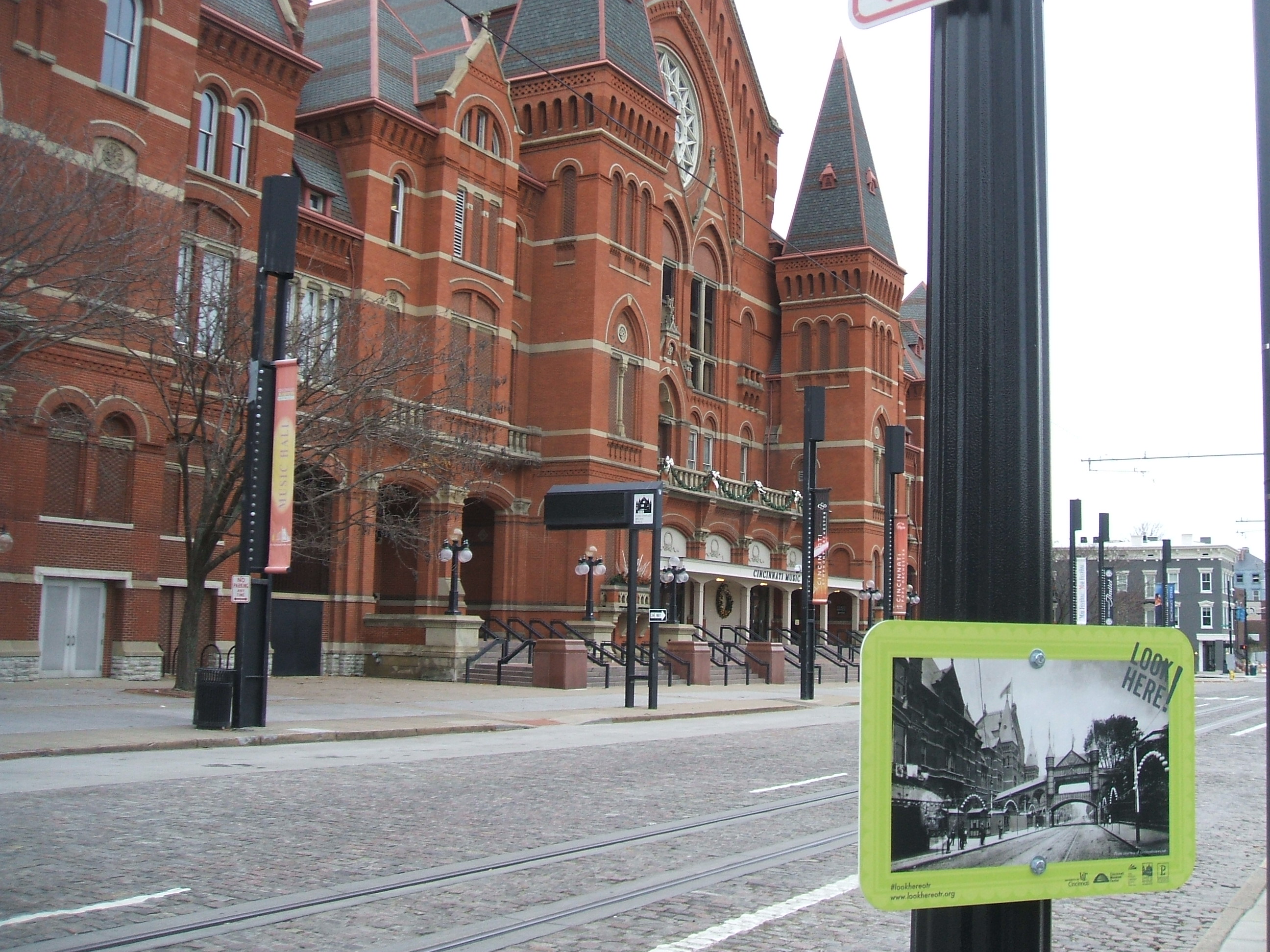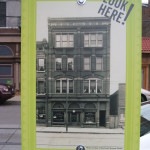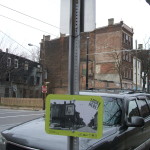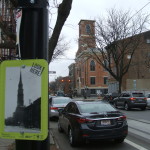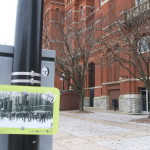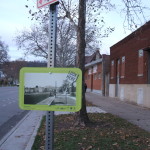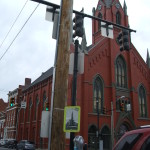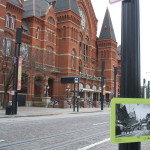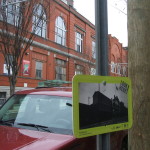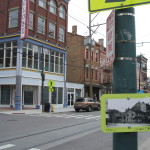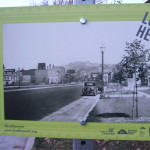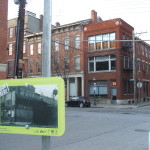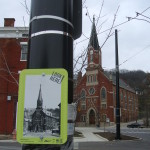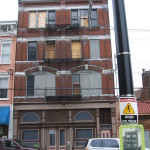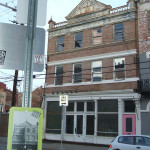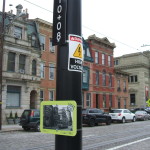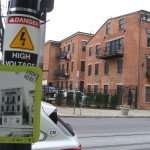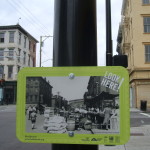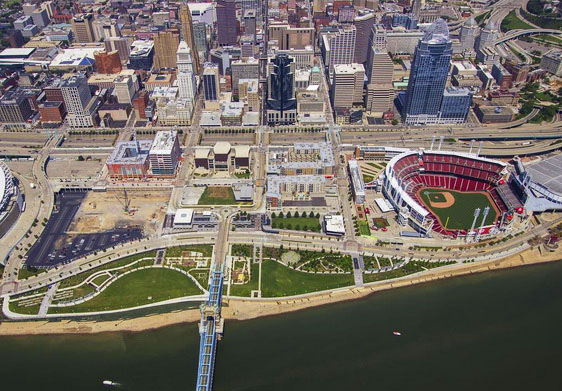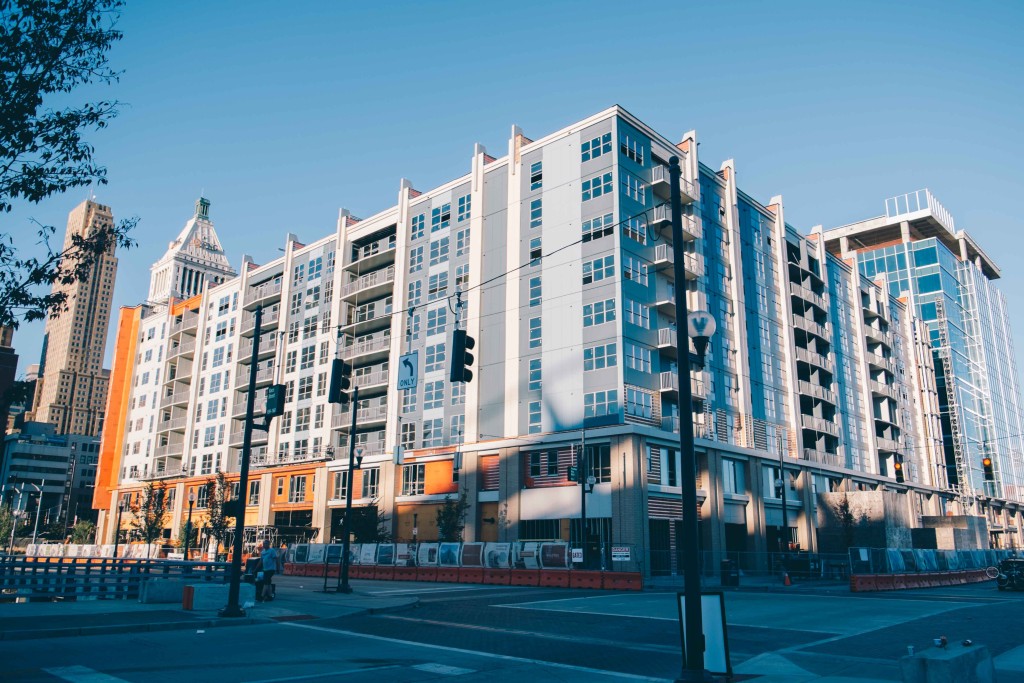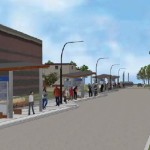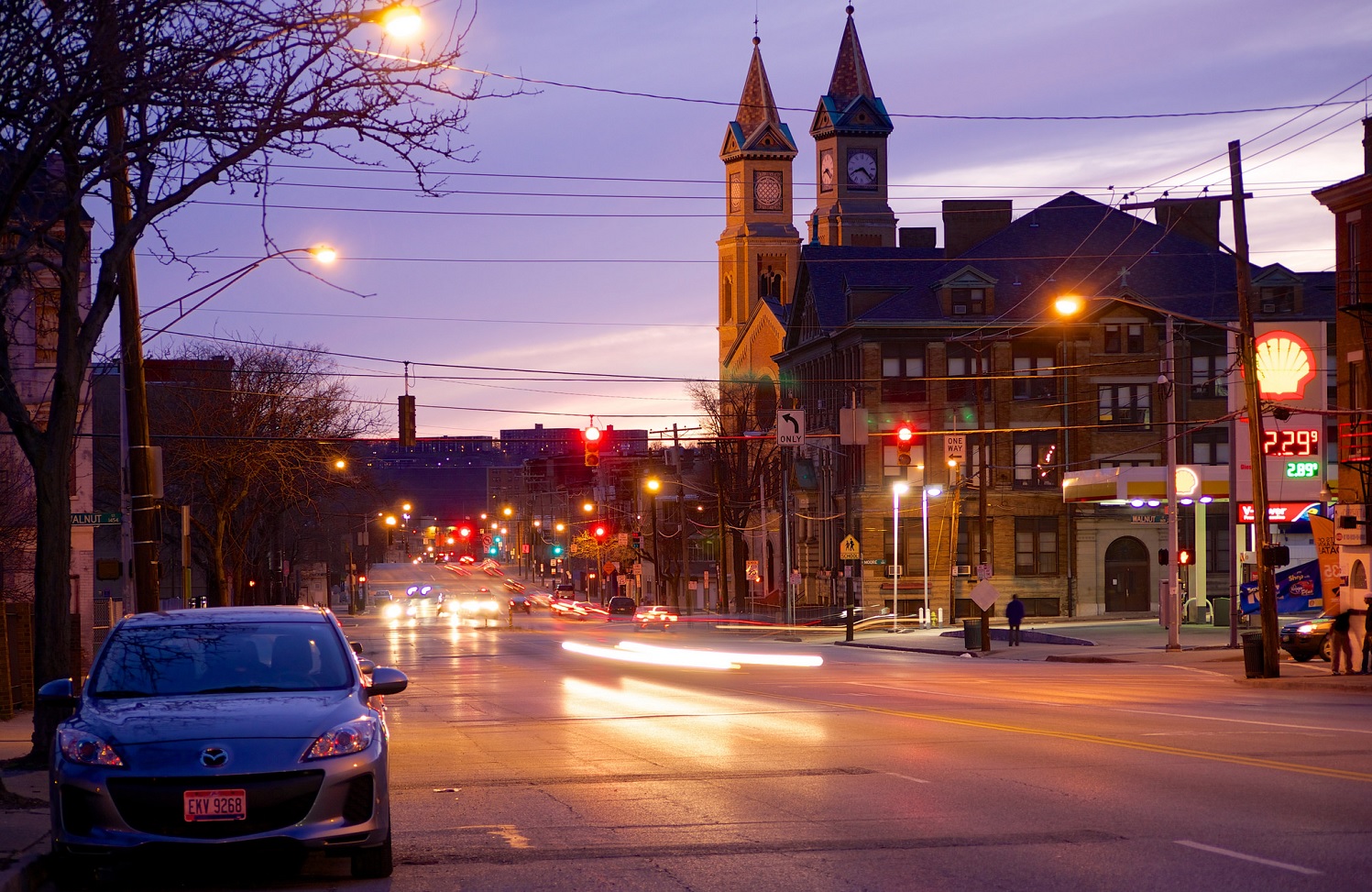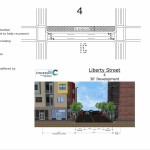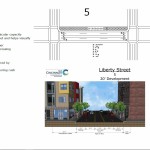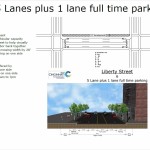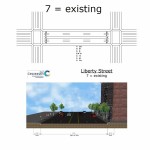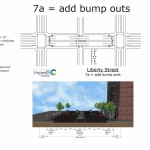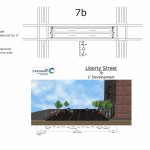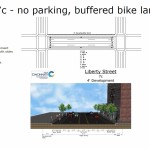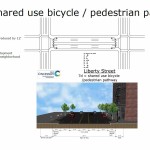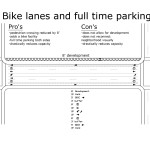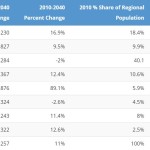Internet forums often serve as a popular location for people to share historical photos of the cities they love, but a new project from a People’s Liberty grantee is bringing that historical looking glass to the streets of Over-the-Rhine.
Anne Delano Steinert, a doctoral student at the University of Cincinnati studying urban and public history, says that she came up with the idea after enjoying place-based historical projects elsewhere – including Jay Shell’s rap lyrics project in New York City, RepoHistory’s work on Civil Disturbances (1998-1999) and Queer Spaces (1994), and The Museum in the Streets in Hastings-On-Hudson, New York.
The idea she employs is simple. She posts historical photos in public places to contrast what that view looked like generations ago. Her initial effort has focused on Over-the-Rhine, but has the possibility of expanding to other places depending on funding and demand.
The project, called Look Here!, is already offering a refreshing analog experience in a city so often defined by tech and digital communications. It is even more beneficial due to the fact that it is equally available for all to experience, regardless of income or access to technology.
“I strongly believe that all of us, regardless of age, class, or training have the ability to read the built environment as a way to enrich our understanding of the past,” Steinert explains. “As a result, I have chosen to post only historic photographs without informational text. The exhibit relies on you to read the photographs, ask questions and make meaning for yourself.”
Steinert says that she hopes this exploration leads people to conduct their own additional exploration and research. She also hopes that it serves as a bridge between the established residents of the historical neighborhood, and the many newcomers.
“The rapid change happening in Over-the-Rhine makes it an ideal location for the exhibit,” Steinert says. “As buildings are rehabilitated and new users join long-established residents, it is important to root the present in an understanding of the past. As the neighborhood evolves, this exhibition will allow Cincinnatians to make connections between the past and the present.”
The 69 exhibits positioned throughout Over-the-Rhine are planned to stay in place through March 2016.
EDITORIAL NOTE: All 17 photographs were taken by Eric Anspach for UrbanCincy in December 2015.
